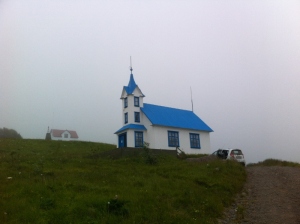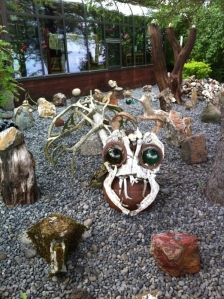After a summer of catching no fish and forgetting how to use my own two feet (I somehow feel I´ve become welded on my horse and haven´t had to walk myself anywhere since June), a reindeer hunting trip sounded like a perfect idea. In Iceland, there is a short reindeer hunting season at the end every summer, split into nine regions around East Iceland, where permits for around 1000 deers are given out to hungry hunters. Four of my friends had a permit this year, so we made a group of 9 to hike around svæði 7 and look for some unsuspecting herds.
The first day went terribly – we planned to wake up at 4, but slept in til 8, because of low-lying fog and thick rain clouds. After sitting around with our 5th cup of coffee by noon time, we decided to try and start hiking into the valley so that by the time we were up in reindeer country, the clouds would be gone. That also didn´t turn out so well, since the rivers were swollen to large from all the rain fall and we couldn´t drive in as far as we wanted. Intsead we had to walk, and cross quite a few more smaller rivers with soaked feet, some 12 km and up 800m, only to face worse weather, with steady rain and wind so strong it was blowing me over.
We found no reindeer that day, just a tuft of hair, some old poo, and footprints that could have just been from the guy walking ahead of you. So, the next day the hunters set out again, this time at 8 am, and by 3 pm, still not a single reindeer in sight, but the same rain and freezing cold instead. It looked hopeless by that point, with only a few hours left before nightfall to shoot 4 deer. But then, a herd was finally found, and two hunters claimed their lives then. The last two weren´t shot til nearly 8 pm, with sunset already on the horizon, and the next few hours involved alot of tired, sweaty, men, taking turns carrying half a bloody deer back down to their jeeps. They finally managed, only to find a flat tire on one car, and after a few more delays trying to tetris the deer on laps and under carseats, we finally had a celebration dinner at 2 am.
Now the meat is hanging somewhere to be processed, and in the next few months, reaping the benefits of reindeer steak will never get tiring. I most look forward to the reindeer skin I get to cuddle with this winter, to keep me from getting cold on the long, dark, winter nights.















